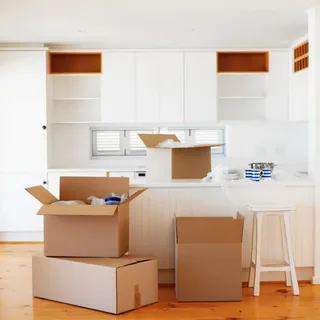Packing up your home is always a challenge, but nothing tests your patience like the kitchen. From fragile glassware to oddly shaped appliances and hundreds of small items, the kitchen is usually the most overwhelming room to pack. That’s why proper planning and techniques are essential if you want everything to arrive safely. By working with experts like Flyttfirma Lund, you can simplify the process and avoid the stress of broken dishes or misplaced utensils.
The kitchen has more categories of items than any other room—cookware, dinnerware, pantry goods, cleaning supplies, and bulky appliances. Without structure, the process can quickly become chaotic. But with a strategic approach and the right tools, you can transform a stressful task into an organized and efficient project.
If you’re planning a move, hiring moving and packing experts can also save time and prevent damage. Still, even if you’re packing most of the kitchen yourself, the following strategies will help you get it done like a pro.
Step 1: Declutter Before You Pack
Before you start wrapping dishes, take time to declutter. Ask yourself:
- Do I use this regularly?
- Is it worth the space in the moving truck?
- Would it be cheaper to replace than to move?
Donate duplicates, toss expired pantry goods, and sell appliances you rarely use. Moving is the perfect opportunity to streamline your kitchen and start fresh.
Step 2: Gather the Right Supplies
The right packing materials make all the difference. You’ll need:
- Sturdy medium and small boxes (avoid large boxes for heavy items).
- Dish packs with dividers for plates and glasses.
- Bubble wrap and packing paper (avoid using newspaper—it stains).
- Packing tape and markers for labeling.
Investing in quality supplies reduces breakage and keeps everything organized.
Step 3: Create a Packing Order
Tackle the kitchen systematically:
- Rarely used items – holiday dishes, serving platters, or specialty gadgets.
- Small appliances – mixers, blenders, coffee machines.
- Cookware and bakeware – pots, pans, trays.
- Dishes and glassware – plates, bowls, cups, mugs.
- Food and pantry items – pack non-perishables, eat or donate perishables.
- Essentials box – everyday items you’ll need immediately after the move.
This order prevents you from packing things you’ll still need during your final days at home.
Step 4: Protect Fragile Items Like a Pro
- Wrap each plate individually and stack them vertically (like records).
- Use dividers for glasses and stemware.
- Cushion the bottom of boxes with crumpled paper.
- Place heavy items at the bottom, lighter ones on top.
Pro Tip: Towels, oven mitts, and cloth napkins can double as padding—saving money and space.
Step 5: Handle Appliances Carefully
Small appliances should be cleaned and packed in their original boxes if available. If not:
- Wrap cords securely with twist ties.
- Place appliances in a sturdy box with padding on all sides.
- Remove blades, filters, or loose parts and pack separately.
For large appliances (fridges, ovens, dishwashers):
- Defrost the fridge at least 24 hours before moving.
- Disconnect gas or water lines professionally.
- Tape doors shut to prevent accidents.
Step 6: Pack Pantry and Food Items Wisely
- Toss expired or almost-empty containers.
- Seal open packages in plastic bags or containers.
- Transport liquids (oil, sauces, vinegar) upright in sealed bags to prevent leaks.
- Avoid packing perishable items—use them before moving day.
Step 7: Don’t Forget Cleaning Supplies
Most movers won’t transport hazardous materials, including bleach, aerosols, and ammonia. Use up or safely dispose of these before moving. For items you’re keeping, pack them separately in a clearly labeled box.
Step 8: Prepare an Essentials Box
Your essentials box should include items you’ll need immediately after the move:
- A few plates, cups, and utensils.
- Coffee maker and supplies.
- Dish soap, sponge, and towel.
- Snacks and bottled water.
Having this box handy will save you from digging through dozens of cartons on your first night.
Step 9: Label and Organize Boxes Clearly
Label each box with:
- The contents (e.g., “Glasses,” “Pots & Pans”).
- The destination room in the new home (“Kitchen”).
- Handling instructions (“Fragile,” “This Side Up”).
Clear labeling speeds up unpacking and helps movers handle fragile items properly.
Step 10: Consider Professional Help
Packing the kitchen is time-consuming, and mistakes can be costly. Professional packers know the best techniques for fragile items and have the right materials on hand. Even if you handle most of the packing, outsourcing the kitchen alone can save you stress and money in the long run.
Common Mistakes to Avoid
- Packing boxes too heavy—kitchen items add up quickly.
- Forgetting to separate hazardous cleaning supplies.
- Using oversized boxes for dishes or cookware.
- Waiting until the last minute, leading to rushed and unsafe packing.
Final Thoughts
Packing your kitchen doesn’t have to feel like an impossible challenge. With careful preparation, the right supplies, and a clear system, you can protect your fragile items and set yourself up for a smooth move. Whether you choose to do it yourself or work with professionals, smart strategies make the difference between chaos and calm.
Remember, moving is a fresh start. By decluttering, organizing, and packing your kitchen with intention, you’ll arrive in your new home ready to cook, entertain, and enjoy without the stress of broken or missing items.


